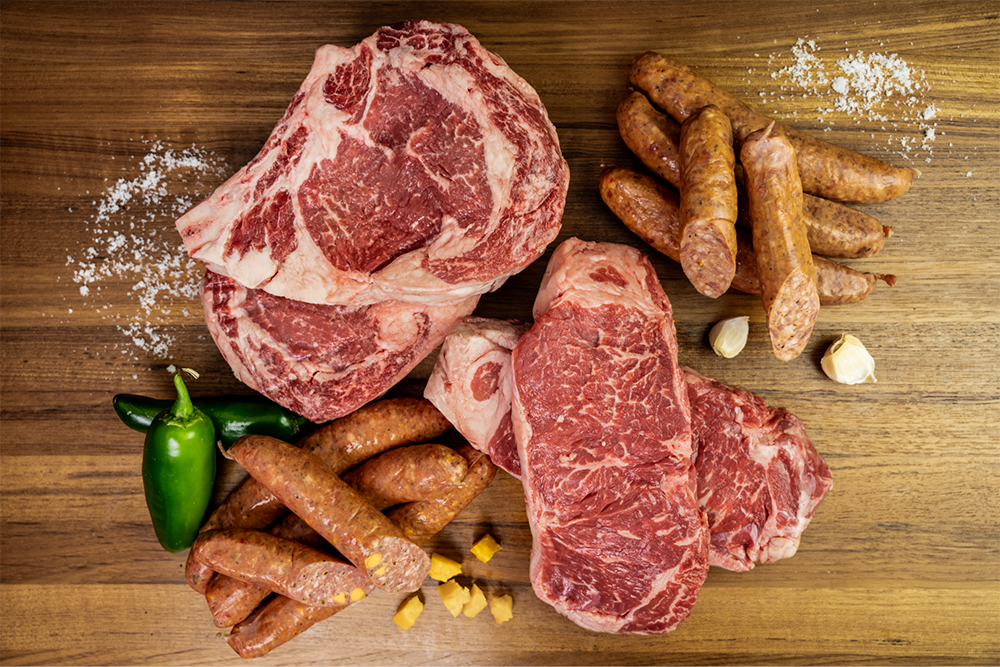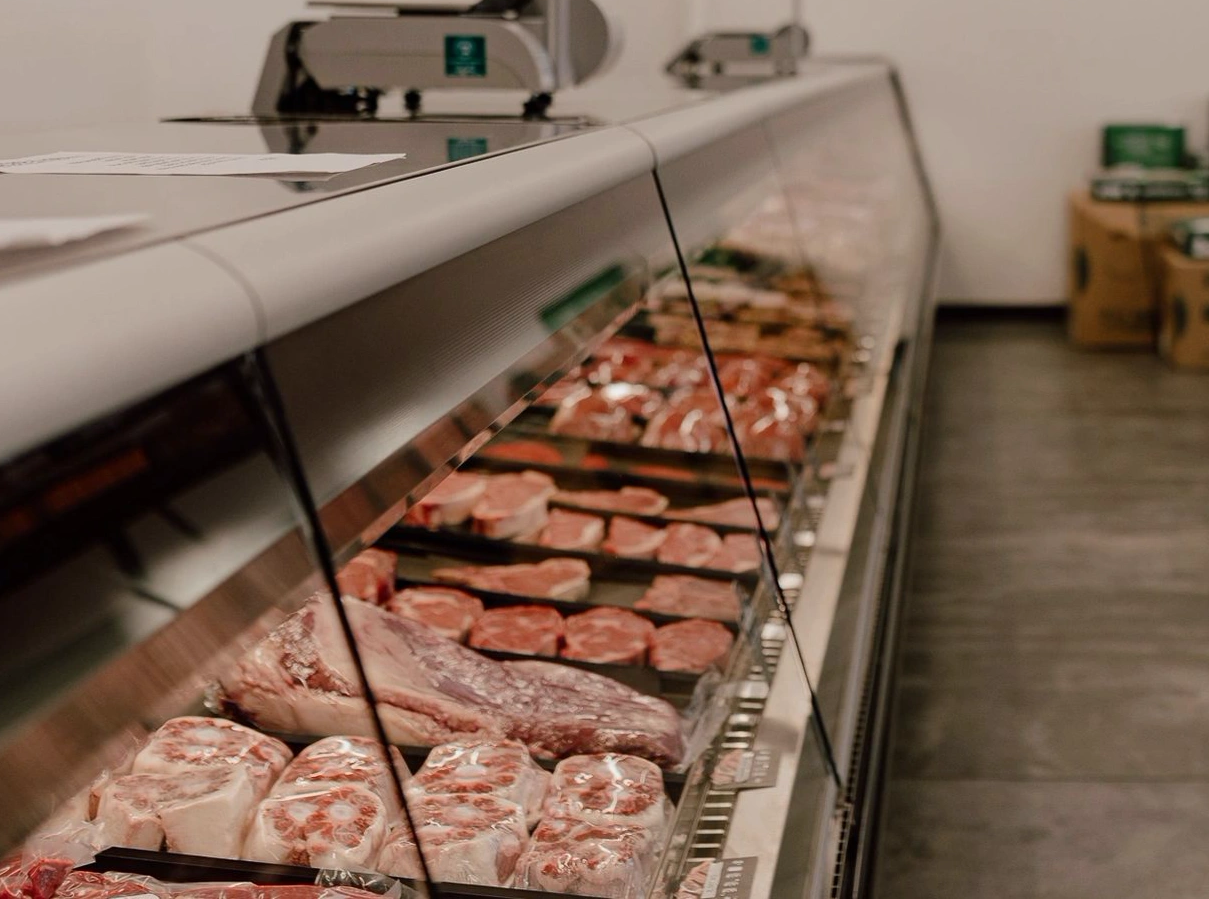Get the very best Offers on Fresh Meat at Bagley Farms Meat Market Edwardsville IL
Discover the Art of the Butcher's Cut in a Modern Meat Market
In the ever-evolving landscape of contemporary meat markets, the butcher's cut has transcended its traditional origins, combining olden craftsmanship with contemporary techniques. Today's butchers are not just cpus of meat; they are knowledgeable craftsmens that highlight sustainability and honest sourcing. Their competence in picking and preparing cuts tailored to specific cooking demands provides an unequaled dining experience. Yet, what truly establishes the contemporary butcher apart is their ability to create a deeper link between consumers and the beginnings of their meat. Just how do these masters balance tradition with advancement, and what ramifications does this have for the future of meat consumption?
Development of Butchery Techniques
The evolution of butchery techniques reflects an abundant tapestry of technology and adjustment driven by improvements in modern technology, adjustments in consumer demand, and a deeper understanding of meat scientific research. Historically, butchery was a craft gave with generations, with methods sharpened over centuries to optimize yield and flavor. The industrial revolution ushered in mechanization, transforming standard techniques and enabling massive handling.
The mid-20th century saw butchery strategies additionally refined by scientific insights into muscular tissue biology and meat aging, enhancing both tenderness and taste. Technologies like vacuum cleaner packaging and refrigeration prolonged product shelf-life, enabling butchers to expand offerings and boost quality assurance. This period likewise marked the increase of specific devices, such as band saws and meat slicers, which raised accuracy and performance in meat processing.

Computerized systems currently help in tracking pet provenance and enhancing cuts to meet particular customer choices. Furthermore, a revival in artisanal butchery has actually emerged, blending typical skills with modern understanding to cater to customers seeking moral and lasting meat options.
Recognizing Meat Cuts
Understanding the details of meat cuts is necessary for both butchers and customers looking for quality and worth. Each cut comes from a various part of the animal, imparting special flavors, structures, and cooking techniques - bagley farms meat market edwardsville il. Mastery of these distinctions not only improves cooking experiences however additionally takes full advantage of the energy of each carcass. For butchers, accurate cuts mirror skill and regard for the craft, ensuring very little waste and optimum yield.

Understanding muscular tissue make-up is crucial; muscular tissues utilized a lot more often by the animal often tend to be tougher and are best suited for why not look here slow-moving cooking approaches, while less-used muscle mass, like those found in the loin, are extra tender and suitable for grilling or roasting. Knowledge with these distinctions empowers customers to make informed selections, enhancing their culinary endeavors.
Picking Quality Meat
Picking the best meat entails more than just selecting a visually attractive item from the display. The art of selecting high quality meat needs a critical eye and knowledge of particular features that signify freshness and quality.
Secondly, consider the marbling, which refers to the white flecks of fat within the muscular tissue. Proper marbling is an essential sign of inflammation and taste, as it melts during food preparation, enhancing the meat's juiciness. Keep in mind, greater marbling frequently associates with superior top quality cuts, such as USDA Prime.
Appearance is an additional crucial element; meat must really feel strong to the touch, not slimed or extremely soft. Additionally, be mindful of the fragrance. Fresh meat must have a tidy, neutral odor, devoid of any sour or off-putting odors.
Pairing Cuts With Cooking Techniques

Conversely, tougher cuts like brisket and chuck roast are abundant in collagen, which damages down into gelatin when cooked gradually. These cuts are excellent for braising or slow roasting, enabling the meat to soften over time and develop deep, complicated tastes. Similarly, cuts such as short ribs and pork shoulder get on well with slow-cooking techniques, where prolonged cooking times change their durable textures into succulent dishes.
Lamb shanks and oxtail, which call for long term cooking to soften, are ideal prospects for cooking or slow simmering. These approaches coax Read Full Article out rich, hearty tastes while maintaining wetness. By comprehending the unique characteristics of each cut, chefs and home cooks alike can boost their cooking productions, ensuring each dish is both satisfying and remarkable.
The Butcher's Duty Today
Navigating the evolving landscape of the modern-day meat market, the butcher's function today extends past mere prep work of cuts. Contemporary butchers are culinary artisans, teachers, and advocates for lasting practices. They link the space in between the farm and the fork by making certain honest sourcing, understanding pet husbandry, and prioritizing openness in the supply chain. This shift shows the growing consumer need for quality over amount, where provenance and animal well-being are paramount.
In addition to crafting exact cuts, butchers currently engage directly with consumers, offering cooking recommendations and customizing selections to fit specific needs and choices. Their knowledge in meat aging, marbling, and taste profiles empowers consumers to make enlightened decisions, boosting their cooking experiences. This personalized solution exhibits the butcher's advancing function as a trusted advisor in the cooking area.
Moreover, butchers are crucial in lessening waste, making use of entire pets to create diverse products such as sausages and stocks. This detailed strategy not only respects the animal however likewise straightens with modern sustainability objectives. In this way, the contemporary butcher personifies both practice and innovation, adapting to an ever-changing market while preserving the artistry and stability of their craft.
Final Thought
Proficiency in recognizing varied meat cuts and quality indications encourages butchers to offer informed referrals, lining up particular cuts with optimal cooking methods. By recognizing historical practices while welcoming contemporary needs, the butcher's function remains essential in today's advanced meat market.